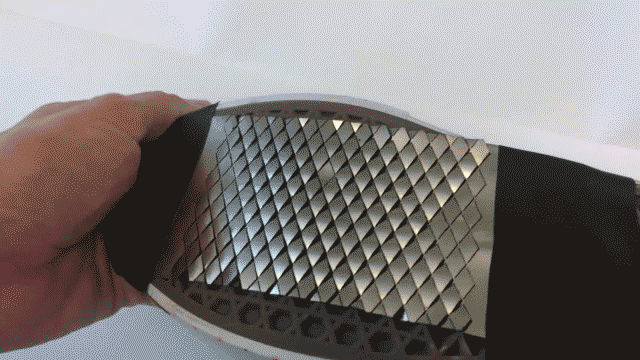
The assistive grips, developed by researchers at the Harvard John A. Paulson School of Engineering and Applied Sciences (SEAS) and MIT, are detailed in Nature Biomedical Engineering.
Japanese art form kirigami inspires robot snake locomotion
"Falls are the leading cause of the death for older adults and the second leading cause of occupational-related deaths," said Giovanni Traverso, an assistant professor of Mechanical Engineering at MIT and co-corresponding author of the paper. "If we could control and increase the friction between us and the ground, we could reduce the risk of these types of falls, which not only cost lives but billions of dollars in medical bills every year."
According to Harvard, the researchers used kirigami to mimic snake scales. The gripper is made from a thin, flexible steel sheet, with dozens of scale-like cuts. When the material stretches, the cuts pop out into spikes that dig into the ground and create friction. When the foot flattens, the spikes fold back into the material, creating a smooth surface again.
"As you walk, the curvature of your shoe changes," said Sahab Babaee, a research scientist at MIT and co-lead author of the paper. "We designed these assistive grippers to pop-out when weight shifts from the heel to the toe and the shoe bends and stretches along the soles."
The team studied gaits to find the exact right curvature of the foot to trigger the spikes and tested the device on multiple surfaces, including ice.
"Through a combination of simulations and experiments, we carefully choose where to make the cuts so that the spikes are stiff and pop out at the best possible angle of attack to maximise the grip of the kirigami with the contacting surface," said Ahmad Rafsanjani, a former postdoctoral fellow at SEAS and co-lead author of the paper.
In tests, the device not only weighed less and was easier to take on and off than leading commercial crampons, but it also outperformed them in creating friction.
"These lightweight, kirigami metasurfaces could play an important role in public health to mitigate slipping and falling in a range of different environments," said Katia Bertoldi, the William and Ami Kuan Danoff professor of Applied Mechanics at SEAS and co-corresponding author of the paper. "They could also be used to improve the mobility of all-terrain robots that could one day travel across difficult environments for search and rescue missions."





Poll: Should the UK’s railways be renationalised?
If only the track is nationalised then it is an emasculated one with limited function and improvements will be focused on existing commuter and large...